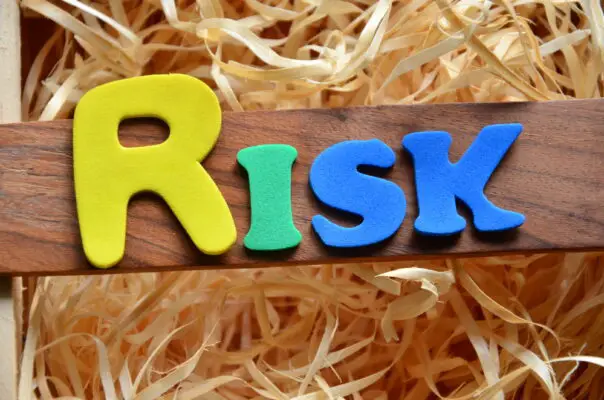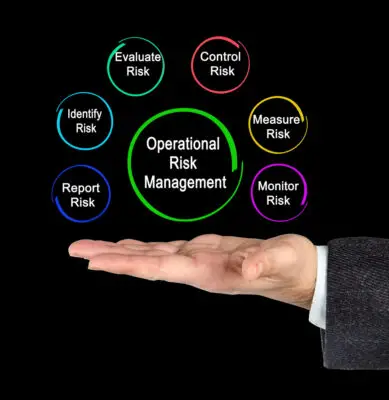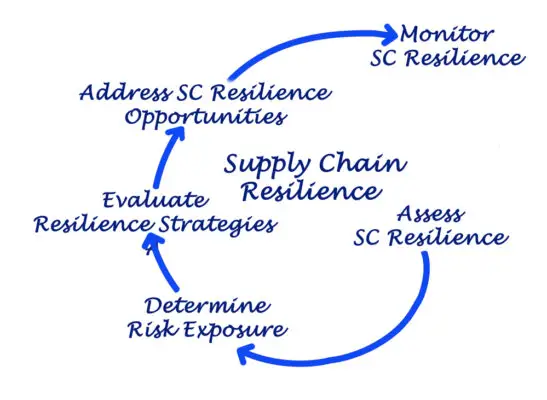Strategic risks are those that arise from external or internal factors affecting a company’s ability to achieve its strategic objectives. These risks can be categorized as operational, financial, reputational, legal, regulatory, technological, and environmental.
Strategic risks are a critical aspect of business operations that require careful consideration and management. These risks can arise from a variety of internal and external factors, including changes in the market, regulatory environment, technological advancements, and competitive pressures.
Understanding strategic risks is essential for organizations to make informed decisions about their future direction and achieve long-term success. Defining strategic risks involves identifying potential events or circumstances that could impact an organization’s ability to achieve its goals.
These risks differ from operational or financial risks in that they relate specifically to the organization’s strategic objectives rather than day-to-day activities.
As such, they may be harder to anticipate or mitigate but can have far-reaching consequences for the organization if left unaddressed. This article aims to explore what strategic risks are, how they arise, and how businesses can manage them effectively to safeguard their future success.

Defining Strategic Risks in Business
Examples and implications of strategic risks include market shifts, customer preferences changes, disruptive technologies, and geopolitical events. The impact of these risks can be significant for the business if not anticipated or managed properly.
For instance, a sudden shift in consumer preferences towards eco-friendly products can result in reduced sales for companies that do not adapt quickly enough.
Similarly, unexpected political instability or changes in regulations can lead to loss of revenue or increased costs for businesses operating in affected regions.
The role of leadership is crucial in identifying and managing strategic risks. Effective leaders anticipate potential threats to their organization’s strategy by conducting regular risk assessments and developing contingency plans. They also foster a culture of risk awareness among employees at all levels within the organization.
This involves encouraging open communication channels where employees feel comfortable raising concerns about potential threats they may have identified while performing their roles.
Leaders create an environment where proactive risk management becomes ingrained into the organizational culture as part of day-to-day operations without being perceived as burdensome or disruptive to business activities.
Identifying Potential Sources of Strategic Risks
One approach is scenario planning, which involves developing a range of hypothetical scenarios that could impact the business, such as changes in market conditions or disruptions in supply chains.
Another important strategy for identifying potential sources of strategic risks is competitive analysis. This involves analyzing competitors’ strengths and weaknesses to understand how they might affect the organization’s ability to achieve its goals.
For example, a new competitor entering the market with disruptive technology could pose a threat to the organization’s current products or services.
In addition to these methods, it is also important for organizations to consider external factors beyond their control that could impact their operations, such as changes in government policies or natural disasters.
Assessing the Impact of Strategic Risks on Business Operations
Strategic risks can have significant consequences for businesses, both in terms of long-term consequences and financial implications.
To assess the impact of strategic risks on business operations, companies should consider the following:
1. Likelihood: Companies must assess the likelihood that a given risk event will occur and measure it against their current risk appetite.
2. Impact: The potential impact of each identified risk event should be evaluated to determine its severity and how much damage it could cause to the organization’s operations.
3. Risk Tolerance: Organizations must evaluate their overall tolerance for risk and determine how they will respond if an identified risk event occurs.
4. Mitigation Strategies: Mitigation strategies should be developed to reduce or eliminate the potential negative effects of identified risks on business operations.
The effective assessment also requires businesses to focus not only on short-term impacts but also consider long-term consequences when evaluating strategic risks. For instance, a company may face significant reputational damage as well as legal implications from unethical practices like bribery or corruption, which may affect its long term survival prospects such as losing customers or facing regulatory sanctions.
Assessing the impact of strategic risks on business operations is critical for ensuring organizational stability over time.
Considering likelihood, impact, risk tolerance levels, and mitigation strategies in addition to longer-term consequences when evaluating strategic risks helps organizations make informed decisions that enable them to mitigate losses while safeguarding profitability over time.

Mitigating Strategic Risks through Risk Management Strategies
Strategic risks are inherent in every business operation, but they can be managed through proactive measures.
Risk management techniques involve identifying, assessing, and addressing potential risks before they materialize into significant threats to the organization’s goals. One of the most effective ways to mitigate strategic risks is by developing a comprehensive risk management plan that outlines the steps necessary to identify, assess, and manage potential threats.
This plan should include clear guidelines on how to respond to different types of risks, including financial, operational, reputational, or legal issues. The plan should also identify key stakeholders who will be responsible for implementing it and provide training programs for employees on how to recognize and report potential risks.
Another important strategy is establishing a strong risk culture within an organization. This involves creating an environment where employees feel comfortable reporting potential risks without fear of retaliation or retribution. It also involves fostering open communication channels between departments to ensure that information about potential risks flows freely throughout the organization.
Building Resilience in Business to Address Strategic Risks
Building resilience in business operations can help organizations effectively manage and adapt to potential challenges, ultimately ensuring long-term success despite external uncertainties that may arise.
To build resilience, companies must implement prevention and recovery measures that will enable them to respond quickly and efficiently to any disruptions in their operations.
These measures may include implementing a risk management strategy that identifies potential sources of disruption, creating contingency plans for various scenarios, and regularly testing those plans to ensure they are effective.
In addition to prevention and recovery measures, establishing a crisis communication plan is also crucial for building resilience in business.
A well-structured crisis communication plan should identify key stakeholders who need to be notified during a crisis, establish clear lines of communication between the organization and those stakeholders, and provide guidance on how the organization should communicate with the public about the situation.
Overall, building resilience in business requires proactive planning and preparation for potential disruptions. Companies must be willing to invest time and resources into developing comprehensive risk management strategies, contingency plans, and crisis communication protocols that will enable them to quickly adapt when external factors threaten their operations.

Frequently Asked Questions
How do strategic risks differ from operational risks?
Strategic risks differ from operational risks in several key ways. One of the most significant differences is scope. Strategic risks are concerned with long-term planning and decision-making, while operational risks focus on day-to-day operations.
This means that strategic risks may involve larger investments or changes that have a broader impact on the organization’s overall direction, whereas operational risks tend to be more immediate and specific to individual departments or processes.
Another key difference between the two types of risk is their time horizon. Strategic risks are often associated with longer-term outcomes and potential consequences, while operational risks are typically more short-term in nature.
Understanding these distinctions is essential for organizations looking to manage both types of risk effectively and develop comprehensive risk management strategies that address all aspects of their operations.
Can strategic risks be completely avoided or eliminated?
Strategic risk management is an essential component of any organization’s risk management framework and involves identifying, assessing, and prioritizing risks that may have a significant impact on the achievement of organizational objectives.
While it is impossible to completely avoid or eliminate strategic risks, effective risk assessment can help organizations mitigate the likelihood and potential impact of these risks.
A comprehensive understanding of factors such as market trends, emerging technologies, regulatory changes, geopolitical events, and other external variables can aid in the identification and evaluation of strategic risks.
What role do employees play in identifying and mitigating strategic risks?
Engaged employees are more likely to identify and mitigate strategic risks, as they have a deeper understanding of the company’s mission and goals.
In contrast, disengaged employees may not understand the potential impact of their actions on the organization’s strategic objectives, which can lead to increased risk exposure.
Therefore, it is crucial for organizations to foster a culture of employee engagement that encourages employees at all levels to identify and report potential risks.
How do external factors, such as government regulations, impact strategic risks?
External factors, such as government regulations, can significantly impact strategic risks. For instance, the impact of competition regulations on a company’s strategic risk cannot be overlooked.
The introduction of new rules and regulations that limit market concentration or promote anti-competitive behavior can affect the competitiveness of a company and expose them to significant strategic risks. Similarly, economic policies can have an immense effect on strategic risks.
Changes in tax laws, monetary policies, and fiscal policies can all alter the business environment and expose firms to financial uncertainties and risks that they may not have anticipated.
Companies must closely monitor external factors such as government regulations to identify potential threats to their strategies and take proactive measures to mitigate these risks.
What is the role of leadership in managing and responding to strategic risks?
A successful leadership approach involves the identification, assessment, and mitigation of potential risks through a comprehensive risk assessment process.
The leader must have a clear understanding of the organization’s goals, objectives, strengths, weaknesses, and external factors that may impact its operations. A proactive leader will be able to anticipate potential risks and develop contingency plans accordingly.
Effective communication is also paramount in mitigating strategic risks as leaders must communicate effectively with stakeholders about potential threats and how they plan to address them.

Conclusion
Strategic risks are an inherent part of any business operation, and their impact can be far-reaching. Understanding the nature of these risks is essential for businesses to survive in today’s dynamic environment.
The article has defined strategic risks as uncertainties arising from external or internal factors that may alter a company’s direction, performance, or reputation.
The potential sources of strategic risks discussed in the article include economic changes, technological advancements, political instability, competition, and regulatory compliance issues. Businesses must assess the impact of these risks on their operations to develop effective risk management strategies.
Mitigation measures such as diversification, contingency planning, insurance coverage, and crisis management plans can help minimize the consequences of strategic risks.
Building resilience is another critical aspect that businesses should consider when addressing strategic risks. It involves creating a culture of adaptability and innovation within an organization to respond effectively to changing circumstances.
Strategic risks pose significant challenges for businesses today. But with proper understanding and management of these risks through mitigation strategies and building resilience within organizations for enduring success in facing adversity makes it possible for them to mitigate the impacts strategically like a captain charting new waters through uncharted territory.

Chris Ekai is a Risk Management expert with over 10 years of experience in the field. He has a Master’s(MSc) degree in Risk Management from University of Portsmouth and is a CPA and Finance professional. He currently works as a Content Manager at Risk Publishing, writing about Enterprise Risk Management, Business Continuity Management and Project Management.

